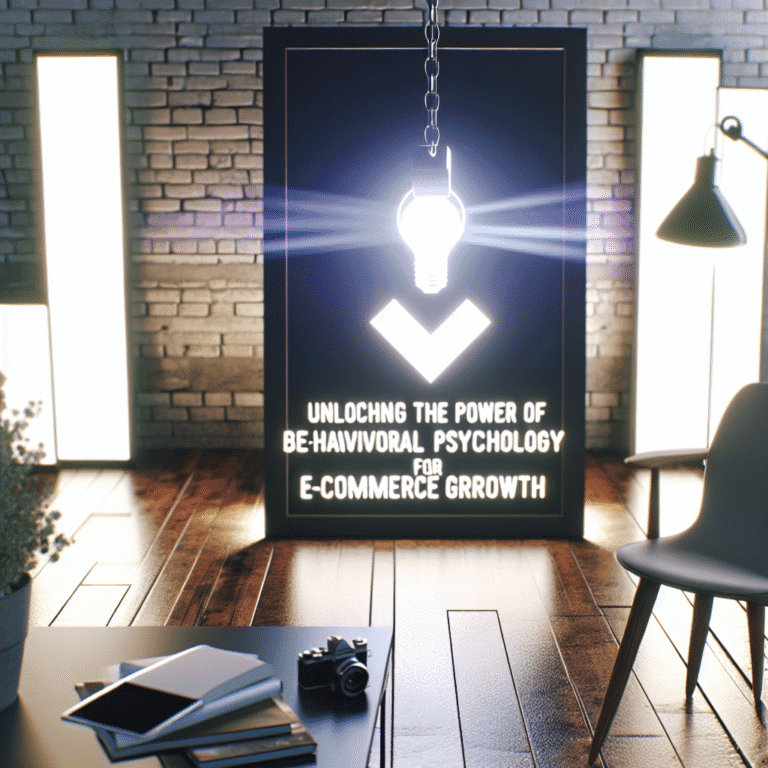Why Cart Abandonment Happens
Let's be honest, most abandoned carts aren't because your site needs a new coat of digital paint. It's because shoppers are as fickle as cats in a garden full of butterflies. They've got choices and distractions to spare. And let's face it, you're competing with Netflix binging sessions. So, if you're seeing carts abandoned like unfinished jigsaw puzzles, it's time to dig into human psychology.
Understanding Psychological Triggers
Psychological triggers are like shortcuts for the brain, making decisions feel easier and faster. It's not about trickery; it's about aligning with how people naturally think. Imagine these triggers as little nudges, helping move a customer from “maybe later” to “must have now.”
Why Price Isn't Everything
Here's some retail wisdom: 95% of buying decisions are made subconsciously. Yes, really. People aren't just looking for bargains—they're trying to avoid stress and second thoughts. Addressing emotions will knock down the barriers that halt sales faster than you can say “abandoned cart."
The Triggers at Work
Let’s delve into some psychological magic that doesn’t require a wand.
Social Proof
People don’t want to feel they’re the only ones buying something novel. They need a little peer approval.
- Pile on the customer reviews with names and photos
- Notifications like “Lucy from Essex just bought this” work wonders
- Show user photos from social media
Social proof eases doubts. If everyone’s doing it, it can’t be wrong, right?
Scarcity
When things are rare, they become treasures.
- Show “Only a few left” messages
- Seasonal collections spice things up
- Highlight how many people have wish-listed the item
Scarcity brings urgency. It tells customers to act before it’s too late.
Urgency
Get them moving with a bit of urgency. People don't like missing out.
- Flash sales with ticking clocks
- “Order in the next hour for premium speed delivery”
- Time-sensitive coupons in the cart
Urgency lights a fire under procrastinators. Action becomes immediate.
Authority
Credibility is key. People trust the experts.
- Use badges like “As seen in popular publications”
- Verify product claims with tests or certifications
- Show off expert credentials on products
Authority squashes scepticism and builds trust.
Consistency
Once people start, they like to finish what they’ve started.
- Let users create wishlists or favourite items
- Offer quizzes that lead to suggested products
- Allow colour and size choices before adding to the basket
Consistency means small steps lead to purchases.
Loss Aversion
We despise losing more than we love gaining.
- “Just hours left to grab your discount”
- Exit pop-ups showing what they’ll miss
- Countdown message beats “Now on sale” every time
Loss aversion gets people worried about missing out and clicking 'buy' faster.
Novelty
Everyone loves a shiny new thing.
- Use “New” or “Just added” labels
- Surprise with secret sales or bundles
- Add small details that delight
Novelty keeps interest high and clicks coming.
Liking
If people like you, they’ll buy from you.
- Show team members’ stories and photos
- Use wit or humour where it fits
- Give your chatbot a friendly vibe
Liking boosts loyalty. It adds heart to the sales drive.
Reciprocity
Give a little; get a little more in return.
- Offer signing-up discounts
- Include small gifts with purchases
- Share free guides or tutorials
Reciprocity builds good will. It nudges the sale into completion.
Frictionless Shopping
Make it easy to buy, and they will.
- Enable one-click purchases
- Use autofill for payment and delivery details
- Show shipping costs and progress bars clearly
Reducing hassle closes sales. People don't finish puzzles missing half their pieces.
Anchoring
How you present value changes customer perception.
- “Was £90, now £39” makes savings look fantastic
- Show bundle deals next to single items
- Position premium options by basics
Anchoring changes perspective, making purchases seem like great deals.
Commitment Bias
Once someone starts with your brand, they’re likely to stick.
- Offer membership levels with special perks
- Subscription models with bonuses
- Referral links with benefits
Commitment keeps customers returning. It’s like remembering a good friend’s birthday.
Putting It All Together
Don't just add one trigger and call it a day. Layer them like you’d layer a lasagne. Match scarcity with urgency, or mix reciprocity with a dose of humour. The idea is to build a seamless experience full of subtle prods that guide people straight to checkout.
In the end, it isn’t about tweaks and hoping for the best. It’s knowing what makes people tick. Cut through the indecision, the procrastination, and you’ll see fewer abandoned carts and more satisfied customers. Keep Jenny in Leeds coming back for that third candle. All it takes is a bit of psychology done right.





